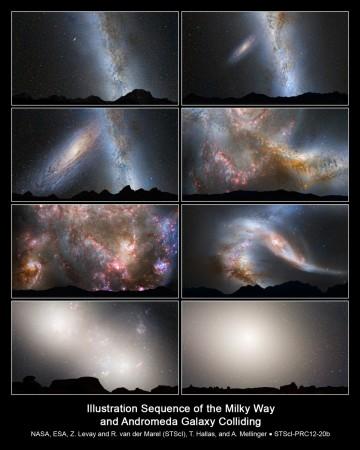This is a cosmic mystery. All galaxies, no matter how large or small, rotate once every billion years like clockwork.
Similar to the way the Earth rotates on its axis and revolves around the Sun, the numerous galaxies in the whole universe are also constantly spinning. But there is also an eerie symmetry there: they all take about a billion years to complete one spin -- regardless of their size.
A recent report by the International Centre for Radio Astronomy Research (ICRAR) says that while this spin of the galaxies is not "Swiss Watch precision", there is a definite level of accuracy, enough to cover all the galaxies in the night sky, reports Phys.org.
"But regardless of whether a galaxy is very big or very small, if you could sit on the extreme edge of its disk as it spins, it would take you about a billion years to go all the way round," explained Professor Gerhardt Meure.
All galaxies that are the roughly the same size can be proved mathematically to have similar interior densities, he added. This discovery, that there is certain regularity when it comes to the way galaxies are formed and exist lead to a better understanding of the mechanics of how they operate.
"You won't find a dense galaxy rotating quickly, while another with the same size but lower density is rotating more slowly," he explained.

The research team has also identified a number of old stars that exist outside the edge of galaxies when they actually expected to find a small population of young stars at the very edge of these galaxies.
"But instead of finding just gas and newly formed stars at the edges of their disks, we also found a significant population of older stars along with the thin smattering of young stars and interstellar gas," said Meure.
This is an important discovery for astronomers, says the professor because it marks a definite point where a galaxy ends. Researchers need not continue their observations beyond a point and not waste time and resources on studying the absolute edges of massive galaxies.
"So because of this work, we now know that galaxies rotate once every billion years, with a sharp edge that's populated with a mixture of interstellar gas, with both old and young stars," Meure said.
In spite of the regular nature of the galaxies' movements, they tend to crash into each other quite often. The Milky Way, for example, will eventually collide and merge with the Andromeda. This process will take billions of years, but what happens as a result is quite remarkable. Billions of stars will be born from combining nebulas; super massive black holes will eat each other up; and there will be an amazing swirl of stars that will, from a cosmic point of view, look quite spectacular.


















